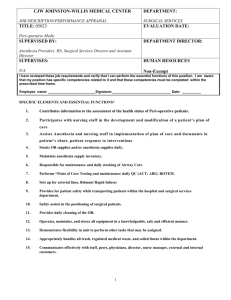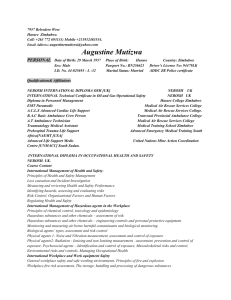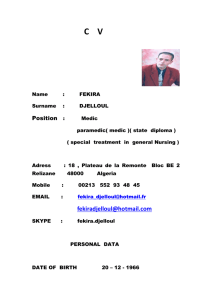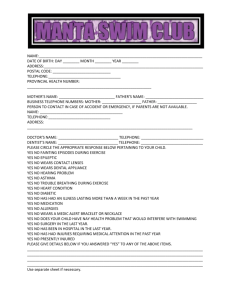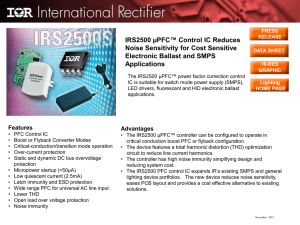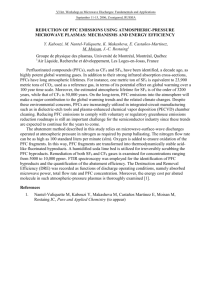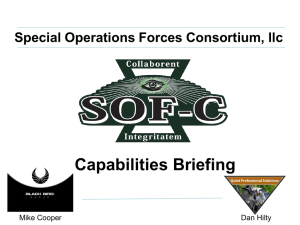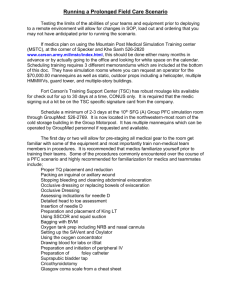AAR Comments and Findings From Conduct of
advertisement
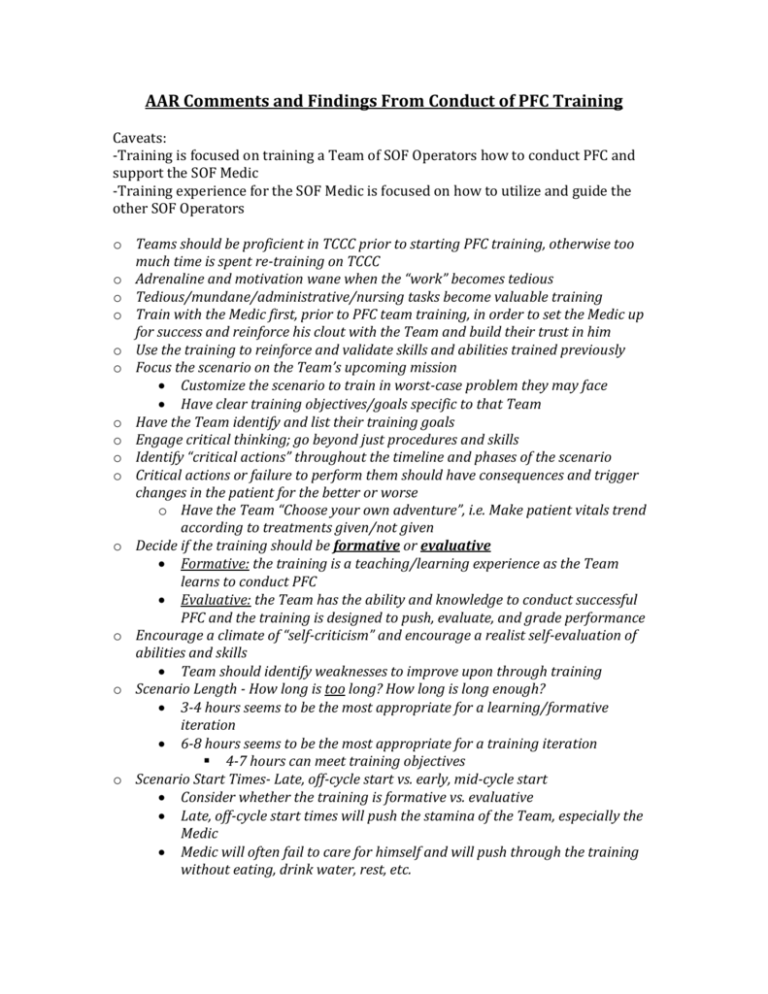
AAR Comments and Findings From Conduct of PFC Training Caveats: -Training is focused on training a Team of SOF Operators how to conduct PFC and support the SOF Medic -Training experience for the SOF Medic is focused on how to utilize and guide the other SOF Operators o Teams should be proficient in TCCC prior to starting PFC training, otherwise too much time is spent re-training on TCCC o Adrenaline and motivation wane when the “work” becomes tedious o Tedious/mundane/administrative/nursing tasks become valuable training o Train with the Medic first, prior to PFC team training, in order to set the Medic up for success and reinforce his clout with the Team and build their trust in him o Use the training to reinforce and validate skills and abilities trained previously o Focus the scenario on the Team’s upcoming mission Customize the scenario to train in worst-case problem they may face Have clear training objectives/goals specific to that Team o Have the Team identify and list their training goals o Engage critical thinking; go beyond just procedures and skills o Identify “critical actions” throughout the timeline and phases of the scenario o Critical actions or failure to perform them should have consequences and trigger changes in the patient for the better or worse o Have the Team “Choose your own adventure”, i.e. Make patient vitals trend according to treatments given/not given o Decide if the training should be formative or evaluative Formative: the training is a teaching/learning experience as the Team learns to conduct PFC Evaluative: the Team has the ability and knowledge to conduct successful PFC and the training is designed to push, evaluate, and grade performance o Encourage a climate of “self-criticism” and encourage a realist self-evaluation of abilities and skills Team should identify weaknesses to improve upon through training o Scenario Length - How long is too long? How long is long enough? 3-4 hours seems to be the most appropriate for a learning/formative iteration 6-8 hours seems to be the most appropriate for a training iteration 4-7 hours can meet training objectives o Scenario Start Times- Late, off-cycle start vs. early, mid-cycle start Consider whether the training is formative vs. evaluative Late, off-cycle start times will push the stamina of the Team, especially the Medic Medic will often fail to care for himself and will push through the training without eating, drink water, rest, etc. Can be a valuable learning point for the Medic and the Team, who must look out for him o Guide the Team to have a plan to quickly and easily “refuel” the Medics or Operators conducting care o Instructors get tired too. Switch Instructor(s) out to maintain momentum and effective teaching and evaluation Have a planned-out and written patient case/scenario with a timeline and clearly identified critical actions throughout the phases of PFC A good, well-written plan will facilitate Instructor handover A tired Instructor is often a poor teacher and evaluator A fresh and energetic Instructor can help the Team maintain momentum and enthusiasm over longer scenarios as the Team tires and the work becomes tedious and boring o The Pucker Factor - Empathy and deep concern for the patient and the situation is difficult to induce in training Putting the Medic on the spot in front of his Team and leadership can sometimes induce desired stress Challenge trainee (both Medic and Operator) ego and confidence Balance this with your goal of reinforcing Team’s confidence in the Medic and reinforcing his clout Don’t set the Medic up for failure, but if the Medic is incapable, that needs to be recognized Clinical rotations in hospitals and clinics where the Medic (and Operator, if possible) is followed, evaluated, and judged by Doctors and patient families can induce the “Pucker Factor” Simulation methods (LTT vs. Mannequin vs. Moulage) simply cannot provide a patient that triggers the “Pucker Factor” LTT offers a living, breathing patient, but the model is dis-similar Mannequins are oversized Barbie dolls Moulage requires a good actor as the patient and can’t support many procedures/treatments The scenario might trigger a Pucker Factor Challenge Medic and Operator abilities, knowledge, and skills in front of peers and leadership Induce a fear of failure Poor decisions or failure to perform needed interventions have consequences and cost the Team something Video feedback and AAR can induce stress if the Team knows that actions and decisions will be reviewed publicly with criticism Common Abbreviations or Terms: AAR – After Action Review HRMT – Human Role-Model Training (another term for LTT) LTT – Live-Tissue Training Medic – a trained Medic Operator – a SOF soldier who is not trained as a Medic PFC – Prolonged Field Care SOF – Special Operations Forces TCCC – Tactical Combat Casualty Care Team – a small unit of SOF Operators *The term “Lessons Learned” is often used as a universally recognized term to describe the positive and negative aspects identified during the conduct of one, or more, exercises, training events, or operations. The term is inaccurate in that true “Lessons Learned” are those lessons or aspects that have been recognized and have a solution or improvement that has been implemented with enough repetition that the solution or sustained action is now common practice. Only then has the “Lesson” become a “Lesson Learned.”
